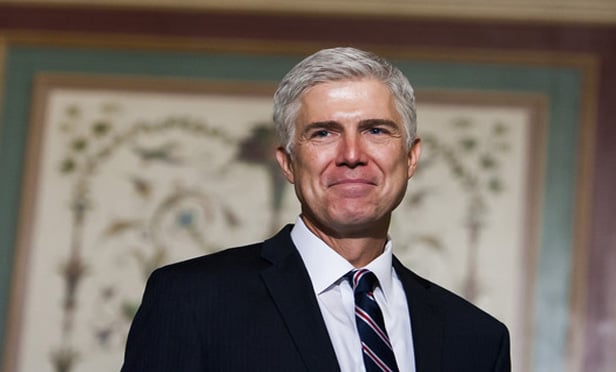Columns & Departments

On the Move
White & Case LLP has expanded its Global Financial Restructuring and Insolvency Practice by adding Philip Abelson and David Turetsky as partners in…
Features

Using a True Lease or a TRAC Lease
<b><I>Potential Complications in Bankruptcy</I></b><p>An equipment financing company will often decide whether it wants a transaction to be a true lease or a TRAC lease as opposed to a retail sale. A good reason to be able to make the distinction is to determine what might be the best structure for an equipment financier. This article explores the differences.
Features

Healthcare Bankruptcy: Not Garden-Variety
For the remainder of 2017, due in part to the current uncertainty in the healthcare industry and its legislative oversight, more financially distressed providers are considering Chapter 11 bankruptcy to effectuate closures, consolidation, restructurings and related transactions.
Features

Sixth Circuit Trims Bank's Good-Faith Defense to Fraudulent Transfer Claims
<b><I>Part Two of a Two-Part Article</I></b><p>Last month, we began our discussion of what constitutes a good-faith defense to a fraudulent transfer claim with an initial examination of the recent Sixth Circuit opinion in <I>Meoli v. Huntington Nat'l Bank</I>. We continue the analysis this month by focusing on sub-issues presented in <I>Meoli,</I> including the question of notice, the proper test of good faith, and an analysis of whether banks may be considered "transferees" with respect to ordinary bank deposits.
Features

Sixth Circuit Trims Banks' Good-Faith Defense to Fraudulent Transfer Claims
<b><I>Part Two of a Two-Part Article</I></b><p>Last month, we began our discussion of what constitutes a good-faith defense to a fraudulent transfer claim with an initial examination of the recent Sixth Circuit opinion in <I>Meoli v. Huntington Nat'l Bank</I>. We continue the analysis this month by focusing on sub-issues presented in <I>Meoli</I>, and, we discuss a recent Ninth Circuit preference decision that offers a mistaken analysis of the transfer issue.
Features

Hiding Assets in California
Often, asset protection advice is bereft of any discussion of California exemption statutes — which often provide the most efficient and safest asset protection. But to properly protect an asset in California, it's generally best to understand and maximize exemptions.
Features

Structured Dismissals in Deviation of the Bankruptcy Code Priority Scheme
In a recent decision, the U.S. Supreme Court held that, without the consent of impaired creditors, a bankruptcy court cannot approve a "structured dismissal" that provides for distributions deviating from the ordinary priority scheme of the Bankruptcy Code. The ruling carries with it implications that may affect both pending and future bankruptcy proceedings.
Features

Sixth Circuit Trims Bank's Good-Faith Defense to Fraudulent Transfer Claims
<b><i>Part One of a Two-Part Article</i></b>The issue of what constitutes a good-faith defense to a fraudulent transfer claim is a murky question that has produced a wide variety of reported decisions from appellate courts over the years. But a recent Sixth Circuit opinion sheds some clear light on a complicated fact pattern.
Features

Restaurant Industry Chapter 11 Bankruptcies
The past year has brought a wave of restaurant businesses filing for reorganization in Chapter 11. With inherently low profit margins, increased competition, limited pricing flexibility and a propensity for expansion without the support of underlying business fundamentals, the industry is particularly susceptible to business failure.
Features

Would <b><i>Jevic</i></b> Have Come Out Differently with Gorsuch?
In <I>Jevic</I>, the members of SCOTUS — sans Neil Gorsuch, who had not yet been confirmed — declined the invitation to "upend" the absolute priority scheme. The question presented: "Can a bankruptcy court approve a structured dismissal that provides for distributions that do not follow ordinary priority rules without the affected creditors' consent?" SCOTUS's answer: a resounding "No." Would Gorsuch have changed that?
Need Help?
- Prefer an IP authenticated environment? Request a transition or call 800-756-8993.
- Need other assistance? email Customer Service or call 1-877-256-2472.
MOST POPULAR STORIES
- Delaware Chancery Court Takes Fresh Look At Zone of InsolvencyOver a decade ago, a Delaware Chancery Court's footnote in <i>Credit Lyonnais Bank Nederland, N.V. v. Pathe Communications</i>, 1991 WL 277613 (Del. Ch. 1991), established the "zone of insolvency" as something to be feared by directors and officers and served as a catalyst for countless creditor lawsuits. Claims by creditors committee and trustees against directors and officers for breach of fiduciary duties owed to creditors have since become commonplace. But in a decision that may have equally great repercussion both in the Boardroom and in bankruptcy cases, the Delaware Chancery Court has revisited zone-of-insolvency case law and limited this ever-expanding legal theory.Read More ›
- The DOJ's Corporate Enforcement Policy: One Year LaterThe DOJ's Criminal Division issued three declinations since the issuance of the revised CEP a year ago. Review of these cases gives insight into DOJ's implementation of the new policy in practice.Read More ›
- The Right to Associate in the DefenseThe "right to associate" permits the insurer to work with the insured to investigate, defend, or settle a claim. Such partnerships protect the insurer and can prove beneficial to the insured's underlying case and ultimate exposure.Read More ›
- Ransomware – COVID-19 & Upgrading Your DefensesIt's pretty shameful that in the current crisis we're seeing ransomware on the rise. It's even more shameful that organizations involved in fighting the virus seem to be especially at risk.Read More ›
- Use of Deferred Prosecution Agreements In White Collar InvestigationsThis article discusses the practical and policy reasons for the use of DPAs and NPAs in white-collar criminal investigations, and considers the NDAA's new reporting provision and its relationship with other efforts to enhance transparency in DOJ decision-making.Read More ›
